The Middlesex Canal, now largely forgotten, was a 27-mile waterway that drove the industrialization of the Merrimack Valley for 50 years starting in 1803. The canal ran from Chelmsford (now Lowell) to Charlestown (now Boston), transforming small agricultural villages into manufacturing towns, even cities. And it cemented Boston’s position as the commercial hub of New England.
The Middlesex Canal inspired more canal building throughout the young nation. It also created America’s first generation of civil engineers who kept on building. They built the dry docks at the Boston Navy Yard and in Norfolk, Va., the Boston and Lowell Railroad, the Union Canal in Pennsylvania, the Erie Canal in New York and the Back Bay mill dam in Boston – to name just a few.
The canal allowed an exponential increase in the amount of product taken to market. A wagon and a team of oxen could haul about three tons. But a canal barge could haul 30 tons.
Shippers could send vast amounts of timber, granite and farm products to market along the Middlesex Canal. But a railroad could haul 300 tons, 10 times as much as a barge. So by 1838, the 35-year-old Middlesex Canal started losing out to railroads. In 1853, the canal would give up the ghost.
Building the Middlesex Canal
Unlike public works projects such as the Big Dig, private financiers built the Middlesex Canal. Like the Big Dig, huge cost overruns plagued the project. In the end, it cost about $500,000 to build, an enormous sum in those days
Boston businessmen and politicians came up with the idea for the Middlesex Canal. Gen. Henry Knox in 1791 headed a company with the impractical aim of building a 100-mile canal from the Connecticut River to the Charles River. A canal from the Merrimack River to Boston Harbor presented itself as a saner and cheaper proposition.
On June 22, 1793, Gov. John Hancock signed the charter of the Middlesex Canal Corporation. He also an invested in the venture, along with prominent political leaders John Adams, John Quincy Adams, Christopher Gore and James Sullivan, the corporation’s president.
Loammi Baldwin
The corporation chose Loammi Baldwin, a self-educated Revolutionary War veteran, as chief engineer.
Baldwin, helped by his sons, and British engineer William Weston surveyed the canal route. Land for the canal was donated, purchased and seized by eminent domain, then a novel concept. Eight companies employing 500 workers built the canal. Canal builders paid some of the farmers who owned the property along the route to dig the canal by hand.

Loammi Baldwin
The canal started in North Billerica at the highest point of the Concord River, which supplied most of its water. More water would be drawn when needed from Horn Pond in Woburn.
From the river, the canal descended six miles northwest to East Chelmsford – now west Lowell. It then snaked 22 miles to the southeast through an aqueduct over the Shawsheen River in Wilmington. The big ditch ran past Horn Pond in Woburn, by Mystic Lake in Winchester, through Medford and ending at the Charles River in Charlestown.
At 3-1/2 feet deep and 30 feet wide, it had 50 bridges, eight aqueducts and 20 locks. In Charlestown, the locks raised barges 107 feet above tidewater – or, from the other direction, 25 feet above the Merrimack River.
The Middlesex Wonder
Baldwin, the Middlesex Canal’s chief engineer, found innovative solutions to the problems encountered along the way. He developed hydraulic cement to make waterproof bindings for the locks by mixing ground volcanic stone with lime and sand. He built a floating towpath of logs to span the Concord River, and he engineered a 188-foot wooden aqueduct to carry the canal over the Shawsheen River. Baldwin also designed an early predecessor of the dump truck, a dump cart, to remove earth from the dig sites.
The first boat launched on the Middlesex Canal on April 22, 1802. The canal expanded to include branch canals in Medford, Boston and Cambridge. Short canals were then built along the Merrimack to make the river navigable all the way to Concord, N.H. In its heyday, the river-and-canal system measured more than 100 miles long.
People viewed it as a wonder. U.S. Treasury Secretary Albert Gallatin called the Middlesex Canal ‘the greatest work of its kind that has been completed in the United States.’ Official delegations from other states came to visit the canal to see not only how it was done, but that it could be done.
An Economic Engine
The Middlesex Canal soon proved that canals could promote commercial activity by providing low-cost transportation. Boats as long as 75 feet could be poled, rowed and even sailed down the river, then pulled by horses along the canal. It took a mere 18 hours to go from Boston to the new city of Lowell and 12 hours back.
Brightly painted passenger boats moved about 25 percent faster than the freight boats. They carried passengers escaping the city heat to the New England countryside for a few days of vacation. Or they took people on sightseeing excursions with stops in the towns and taverns along the canal. One of New England’s first amusement parks, built along the canal at Horn Pond in Woburn, offered dancing and bowling.
Lumbermen, quarrymen and farmers sent down the waterway their stone, iron ore, timber, ashes, butter, cheese, beef, pork, cider and grains. Merchants sent up the waterway foreign manufactured goods, groceries, codfish, mackerel, salt, lime and plaster.
Transformation
The canal made accessible the tree bark from New Hampshire used to tan leather, and it transformed Woburn from a rural farm town to a center for the leather industry. Part of Chelmsford became Lowell, and the Lowell textile mills began construction in 1821. Soon raw cotton, wool and finished textiles were shipped up and down the canal. When the Middlesex Canal extended into Boston, farmers sent their hay to – where else? – Haymarket Square, where horses that drew carriages and wagons fueled up.
The Middlesex Canal also changed the look of Boston. Light-colored granite native to Chelmsford, Tyngsboro and Westford could be easily shipped along the canal to Boston. The architect Charles Bulfinch used ‘Chelmsford granite’ for the state prison in Charlestown in 1804. He followed that up with University Hall at Harvard, the Massachusetts Bank on State Street, the Middlesex County Jail in Cambridge, the Massachusetts General Hospital, and more. Then following Bulfinch, Alexander Parris designed Quincy Market with Chelmsford granite; others, still, would follow him.
The Losers
Not everyone benefited from the Middlesex Canal. Investors who held on to their shares lost money on the venture, though other investors profited if they sold at the right time. A share purchased for $25 in 1794 would have brought $500 if sold in 1804, $300 in 1816.
Dams used to adjust the water level flooded farmers’ meadows as far as 25 miles north. Farmers who sued the canal proprietors in court lost their cases, mostly because they didn’t have the clout that the Middlesex Canal Corporation had. Some of their flooded meadows now belong to the Great Meadows National Wildlife Refuge as wetlands.
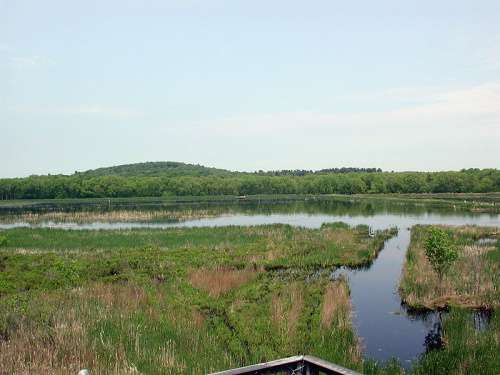
Great Meadows National Wildlife Preserve in Concord.
Newburyport probably lost the most from the canal. Nearly all shipments from New Hampshire now went to Boston because the canal was far easier to navigate than the sometimes-treacherous Merrimack River, which flowed into Newburyport.
The engineers who built the canal were in an odd way responsible for its demise. Planners for the Boston and Lowell Railroad followed the maps used to survey the canal’s path. Freight shipments then began immediately after the first railroad track was finished in 1835. In 1851, the Middlesex Canal collected its last toll, and it completely ceased operations in 1853.
All Wasn’t Lost
That didn’t completely end the Middlesex Canal. Charles and Thomas Talbot bought the canal’s land, dam and water rights in North Billerica. Then they built mills that now stand in the Billerica Mills Historic District.
Today, part of the MBTA Commuter Rail system follows the canal route between Boston and Lowell. Parts of the Mystic Valley Parkway in Medford and Winchester were built on the old canal. So were parts of Boston Avenue in Somerville and Medford. And the canal once extended from the Charles River to Boston Harbor along Canal Street in Boston. You can even see parts of the locks on Faulkner Street.
People can still see water-filled remnants of the canal in Wilmington, Billerica, and in Woburn near Loammi Baldwin’s house, lately a Chinese restaurant. Hikers can walk along filled-in sections in Winchester at the Mystic Lakes. And in Wilmington, motorists can see the remains of an aqueduct in the park off Route 38.
The Middlesex Canal Association, which tries to preserve and restore the canal, runs the Middlesex Canal Museum and Visitor Center in North Billerica. Its website offers a wealth of information about the canal.
The Middlesex Canal is on the National Register of Historic Places and designated a National Historic Engineering Landmark.
This story was updated in 2024. Great Meadows photo by By Csgwiki – Own work, Public Domain, https://commons.wikimedia.org/w/index.php?curid=6684990.
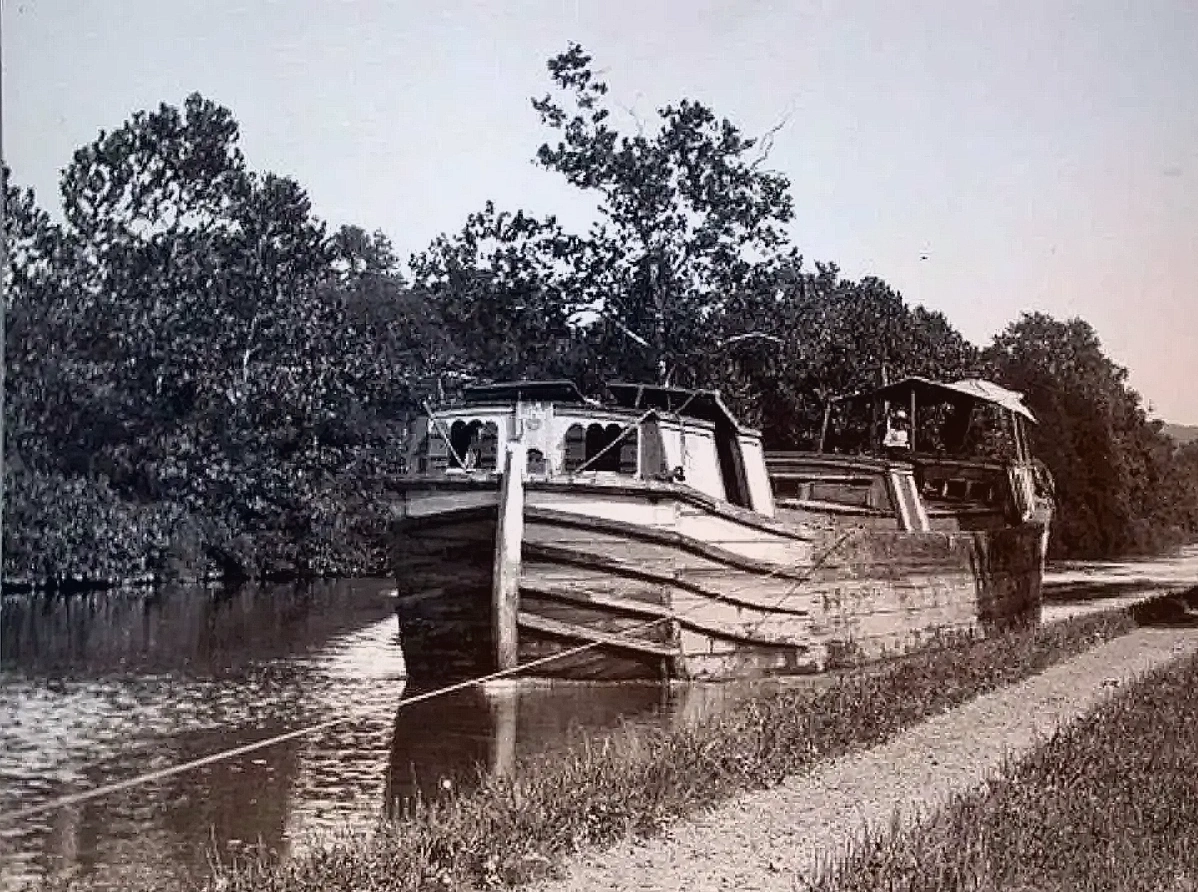
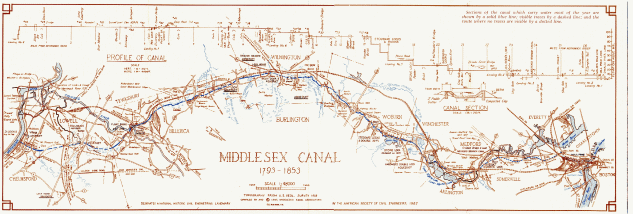
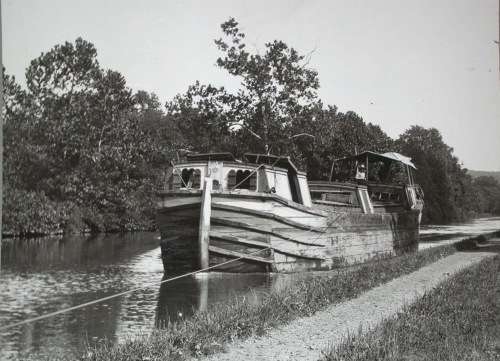

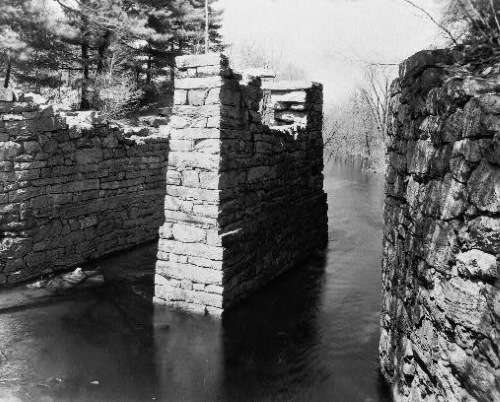
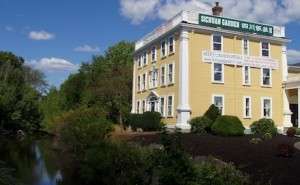
16 comments
a picture of the yellow house. An important meeting room for bcgi.
[…] 18th century, Deacon Samuel Thompson stumbled across the Baldwin apple tree while surveying for the Middlesex Canal. He told the canal’s engineer, Loammi Baldwin, about the fine red apple. Baldwin quickly […]
[…] 1753 in Woburn, Mass. He was educated at the village school, though he sometimes joined his friend Loammi Baldwin at Harvard College to listen to Professor John […]
The building of the canal started at North Billerica and proceeded south, with the Concord River providing the water. But your 9th paragraph incorrectly calls that the high point of the river. How did the water manage to flow to that point? North Billerica was the high point of the canal, but not the river.
the concord river flows north, at the point where the canal crosses the concord river is the highest point also it states the aqueduct is in wilmington but it’s actually in billerica and wilmington at the border
Are any of the stop points or dwellings still marked or standing in Wilmington ?
This is an amazing story, if we lived during the building of the canal , it’s completion and time in service, that is all we would be talking about. I imagine the different commodities an treats that would be available, and latter with the Lowell mills producing millions of yards of textiles!!!! It was bright colors curtains clothes. Thew industrial Revolution was a cultural- artistic revolution. People could travel on the boats to sight-see and stop at towns and bars restaurants, and you could travel into the big city in 12 hours from Lowell to Boston , from Billerica to Boston it would probably take 10 and half hours) Imagine going to Boston, it would take at least two days, if you were to look around Boston for a short time. I wonder how long it took by horse? I think horseback might have been a little faster? I know one thing about the horseback ride ,I bet you would have been a little tired out and your rear-end might have a few pains. I bet a lot of people went to the sparkling new city of Lowell, it was a lot closer and cleaner. I am really proud to live in Billerica and in the great Merrimack River Valley.
Too bad it was only useful for about 45 years. It was far cleaner than the coal fired steam locomotive. It must have been a leisurely and picturesque trip and much quieter than the noisy and dirty train.
[…] was a booming time for Nashua, then called Dunstable. The Middlesex Canal, opened in 1803, opened up the city to trade with the cities and ports of Massachusetts, especially […]
[…] The Baldwin apple was named after him, but even that wasn’t his claim to fame. He built the Middlesex Canal, once a major commercial waterway. Remnants of the canal, which opened in 1803, can be seen right […]
[…] 1806, the Middlesex Canal made the Pawtucket Canal […]
[…] Fenwick maintained the property for many years. Eventually the soil from Mt. Benedict filled in the Middlesex Canal. The Ursulines returned to Boston in 1946 when they founded the Ursuline Academy, at that time on […]
[…] you enjoyed this story about the Cape Cod Canal, you may want to read about the Middlesex Canal here. This story was updated in […]
[…] then called Dunstable, enjoyed a boomtime in 1835. The Middlesex Canal, opened in 1803, allowed the city to trade with the cities and ports of Massachusetts, especially […]
[…] operate the giant mills’ machinery. The mill owners, known as the Boston Associates, had already reshaped the Merrimack Valley with dams and canals. By 1850 they controlled 45 miles of the Merrimack River and produced more waterpower than in all […]
[…] “The Middlesex Canal: New England’s Incredible Ditch”: A fascinating article from the New England Historical Society. […]
Comments are closed.